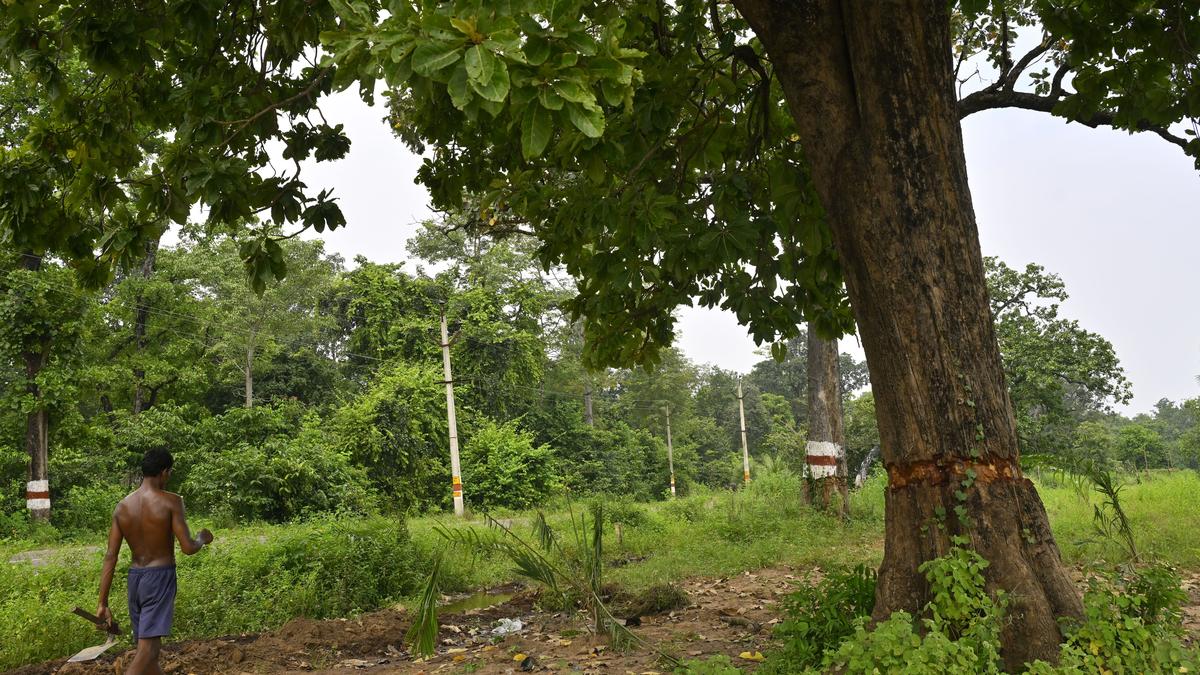Recently, the Chhattisgarh forest department issued a letter designating itself as the nodal agency for implementing community forest resource rights (CFRR) under the Forest Rights Act (FRA), 2006. CFRR, a transformative provision of the FRA, recognises the right of gram sabhas to manage their customary forests. It seeks to rectify the injustices of colonial forest consolidation which dispossessed local communities and supplanted their traditional management institutions with centralised state control.
Not only was this usurpation of the nodal role contrary to the FRA, but the letter violated gram sabhas’ statutory authority to implement locally developed management plans in their community forest resource (CFR) areas by insisting on a model plan from the Ministry of Tribal Affairs (MoTA). This is not required by law. It also prohibited other departments or NGOs from supporting gram sabhas in CFRR management planning.
The letter was withdrawn after a spirited grassroots mobilisation by gram sabhas, local elected representatives, and Adivasi rights groups. Still, the persistent attack on gram sabhas’ autonomy in managing their forests demands a closer look at how forests should be managed under the FRA.
Forest management
Historically, forests under government control (excluding wildlife sanctuaries or national parks) have been managed through forest departments’ working plans. These plans are rooted in the colonial misnomer of “scientific forestry”, i.e., planning and harvesting to maximise timber production. Ecologists, starting with Madhav Gadgil, questioned this approach, especially since early working plans even included clearfelling natural forests and replacing them with single-species plantations. The decline in India’s forests, evidenced by the spread of invasive species and the increase in degraded forest areas, has fuelled doubts about the appropriateness of working plans. But for forest departments, they remain an article of faith to structure their operations and mobilise financial resources.
In forest-rich central India, the continuing emphasis of working plans on timber extraction, which restricts communities’ access and alters the composition of forests, was met with resistance even before Independence. While working plans have begun to consider restoration and wildlife conservation objectives, they remain products of bureaucratic writ, largely detached from local livelihoods and closed to independent scientific scrutiny.
The FRA’s radically different vision recognises the integral role of local communities in the “very survival and sustainability” of forests. CFR management plans are to be developed by gram sabhas to prioritise local needs and address current problems. These plans shall be “integrated” with working plans by the gram sabha. In other words, working plans will no longer apply in CFR areas, because communities will manage forests with a different objective and at much finer scales.
Over 10,000 gram sabhas have received CFRR titles in India, but perhaps less than 1,000 have prepared their CFR management plans. Even their implementation is constrained by the refusal of forest departments to recognise their legitimacy and support gram sabhas. Instead, they have pursued a strategy of attrition, delaying or rejecting CFRR claims, attempting to revoke CFRR titles, and denying funds to CFRR-holding gram sabhas. Their aim to retain colonial power is concealed under arguments that communities lack the ability to manage forests scientifically.
MoTA’s vacillating responses have not helped. In 2015, it issued guidelines that gram sabhas can use simple formats for their plans, but later came under pressure to alter its stand. A 2024 joint letter with the Environment Ministry required CFR management plans to conform to the National Working Plan Code (NWPC) and even suggested the involvement of foresters in their preparation. This violates the FRA’s letter and spirit.
Addressing the bogeyman
Even according to the NWPC, a working plan should outline “the purpose with which a forest should be managed so as to best meet the interests and wishes of the owner, and indicate the means by which the purpose may be accomplished.” Yet, the lengthy processes and data-intensive formats that the NWPC prescribes carry the hangover of maximising timber yield. In contrast, forest management by gram sabhas will likely pursue multiple livelihood needs, for which the NWPC provides little guidance.
Significant portions of working plans are devoted to cataloguing local conditions, but they abstract their complexities to focus on the forest crop (not ecosystem). A gram sabha’s plan need not do the same because these insights are part of their lived experience. The variable impacts of climate change also challenge the linear trajectories of working plans, which need more adaptive responses that gram sabhas offer. CFRR demands shedding historical baggage and embracing new possibilities.
The path forward is evident. The Dharti Aaba Janjatiya Gram Utkarsh Abhiyan, launched by the Central government last year, introduced an indicative framework for CFR management plans. While the framework can be improved, it can be achieved through flexible and iterative practice by gram sabhas. MoTA must reject any attempt to derail CFR management through the red herring of NWPC compliance. And forest departments must provide funds and protection when required and discard a timber-oriented science in favour of a different science of a people-friendly forest management.
Gautam Aredath, policy analyst at the Ashoka Trust for Research in Ecology and the Environment; Sharachchandra Lele, distinguished fellow at the Ashoka Trust for Research in Ecology and the Environment. Views are personal
Published – July 16, 2025 01:55 am IST
